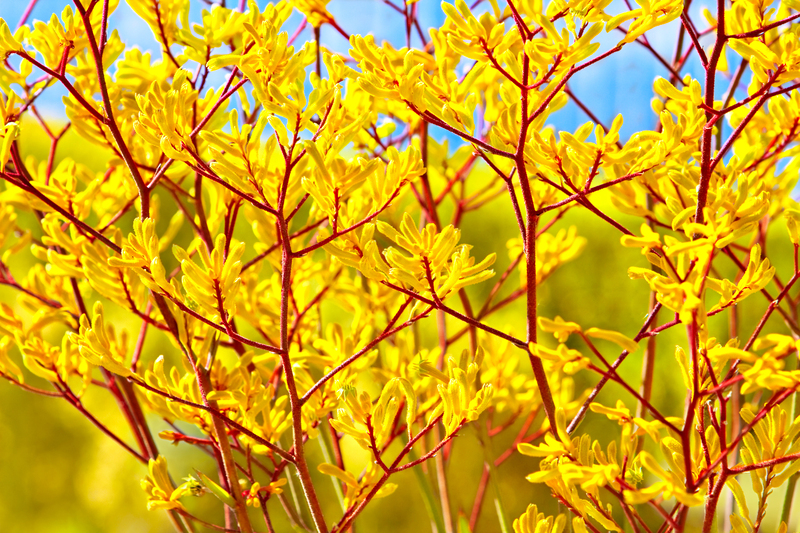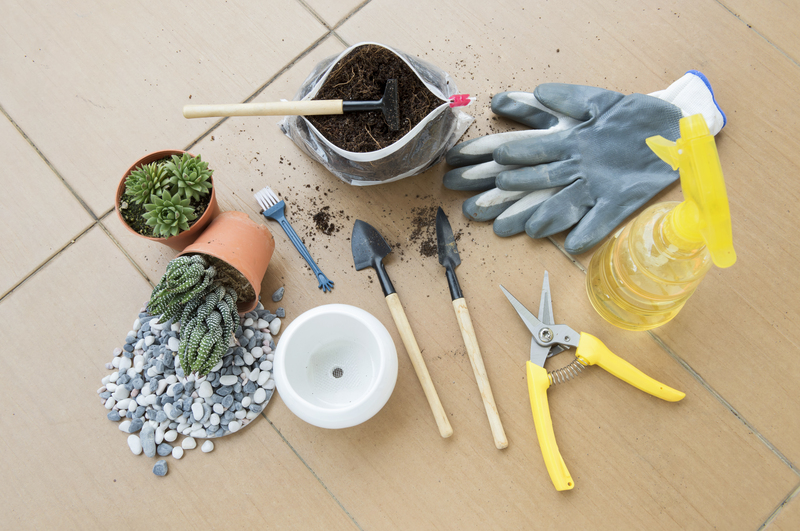Secrets to Thriving Orchids
Posted on 28/08/2025
Secrets to Thriving Orchids
Orchids have captivated plant lovers for centuries with their exquisite beauty and mystique. But what truly are the secrets to thriving orchids? This comprehensive guide unveils everything you need to know about successfully nurturing your orchids--from choosing the right varieties to optimizing their care. Whether you're a novice or have a growing collection, discover the proven practices and expert tips to unlock the full potential of your cherished orchids.
Understanding Orchid Basics
Before diving into advanced care techniques, it's essential to understand what makes orchids unique. With over 25,000 species and countless hybrids, orchids exhibit a wide array of shapes, sizes, and colors. However, a few foundational elements remain consistent across most varieties:
- Epiphytic lifestyle: Many orchids grow on trees in nature, not in soil
- Aerial roots that absorb moisture and nutrients from the air
- Pseudobulbs for water and nutrient storage in certain types
- Distinct bloom cycles--some bloom once a year, others more frequently
Popular Orchid Varieties for Beginners
If you're just starting your orchid journey, consider these forgiving and stunning varieties:
- Phalaenopsis (Moth Orchid): Long-blooming, forgiving, ideal for beginners
- Dendrobium: Abundant flowers, easy care, great for indoor environments
- Cattleya: Known for large, fragrant flowers and vibrant colors
- Oncidium (Dancing Lady): Resilient with lovely sprays of blooms

The Ideal Orchid Environment
One of the secrets to thriving orchids lies in replicating their natural habitat. Here's how to craft the perfect home environment for your plants:
Light: The Goldilocks Rule
Not too much, not too little--just right!
- Bright, indirect light is crucial. Direct sun can scorch leaves, while too little light hinders blooming.
- South or east-facing windows are often ideal for most varieties.
- Leaves should be a vivid light green; dark green indicates insufficient light, while yellowish leaves suggest too much.
Temperature and Humidity
Orchids thrive in stable environments.
- Daytime temperatures between 65-80?F (18-27?C)
- Nighttime temperatures between 55-65?F (12-18?C)
- Humidity levels of 50-70% are optimal. Use a humidifier or humidity tray for drier homes.
Air Circulation
Good airflow prevents disease and encourages robust growth.
- Set up a small fan on low near your orchids, but not directly blowing on them.
- Open windows occasionally to allow fresh air exchange when conditions permit.
Watering Your Orchids
Overwatering is the number one mistake in orchid care. Here's how to become a watering expert and keep your orchids hydrated but not soggy:
- Water thoroughly but allow the potting mix to dry slightly between waterings.
- Never let orchids sit in standing water--always empty saucers or trays.
- Use tepid, non-softened water. Rainwater or distilled water is often best.
- Water frequency depends on temperature, humidity, and potting medium. Once a week is common, but adjust as needed.
- If unsure, stick a finger one inch into the media--if it feels dry, it's time to water.
Mastering the Art of Orchid Potting
Selecting the Perfect Potting Mix
Remember, most orchids are epiphytes and won't thrive in regular soil. The best orchid potting mix typically contains:
- Bark chips (fir or pine): Promotes drainage and airflow
- Sphagnum moss: Retains moisture, suited for drier climates
- Perlite or charcoal: Extra aeration and prevents compaction
Choose a potting blend appropriate for your orchid type. For example, phalaenopsis orchids love chunky bark blends, while some vandas prefer baskets with just a sliver of medium.
When and How to Repot Orchids
- Repot every 1-2 years. Signs it's time: roots growing out of pot, or decomposing media.
- Gently loosen and trim dead roots. Use fresh, sterilized potting mix.
- Choose pots with plenty of drainage holes--clear pots help monitor root health.
Nurturing Your Orchid With Proper Feeding
The Fertilizer Formula for Thriving Orchids
- Use a balanced orchid fertilizer (20-20-20 or similar) every 2-4 weeks.
- During active growth, fertilize "weekly, weakly" using diluted fertilizer (about 1/4 strength).
- Rinse thoroughly with water monthly to prevent salt buildup.
- Reduce feeding in fall/winter as growth slows--don't force orchids to grow out of season.
Secrets to Achieving Spectacular Blooms
Triggering the Bloom Cycle
- Most orchids need a cooler nighttime temperature to initiate flowering -- typically a drop of 10?F for several weeks.
- Maintain consistent watering & fertilizing as buds develop, but avoid over-watering.
- Ensure enough light--insufficient light is the main reason orchids don't rebloom.
Post-Bloom Orchid Care
After blooms fade, don't toss your orchid!
- Cut flower spikes back to a node (on phalaenopsis) or at the base (on others) to encourage reblooming or healthy regrowth.
- Provide continued care; most orchids can rebloom annually or even more frequently with proper treatment.
Common Orchid Problems & How to Solve Them
- Yellow Leaves: Usually from overwatering or direct sun exposure. Adjust your care regimen accordingly.
- No Blooms: Often due to low light or insufficient temperature drop. Reevaluate your environment.
- Root Rot: If roots are brown, mushy, or foul-smelling, remove affected roots and repot in fresh, dry mix.
- Pests: Mealybugs, scale, and aphids can be removed with insecticidal soap or manual picking.
Preventing Orchid Diseases
- Always sterilize tools before using on multiple plants.
- Provide good air circulation and avoid wetting leaves late in the day.
- Remove dead or decaying plant material promptly.
Advanced Secrets for Thriving Orchids
Experimenting With Advanced Techniques
- Mounting orchids to bark or driftwood for an authentic, natural look
- Creating microclimates using glass terrariums or humidity domes for rare species
- Supplementing with grow lights in darker homes--full-spectrum LED lights are ideal
Patience and Observation
Orchids are slow-growing and respond best to intentional, gradual adjustments in care. Take time to observe changes and respond accordingly.
- Keep an orchid journal to note blooming cycles and care routines.
- Observe leaves, roots, and blooms closely for subtle signs of imbalances or health.
Tips from Orchid Experts
- Rotate your orchid's position every week for even growth.
- Group orchids together to create a mini humidity oasis.
- Join local orchid societies or online communities for support and troubleshooting. Don't be shy to ask questions--orchid enthusiasts are famously helpful!

Frequently Asked Questions About Thriving Orchids
How Often Should I Water My Orchid?
Check moisture by touch, but generally, water once a week--more often in warm weather or low humidity. Ensure pots drain well.
Why Aren't My Orchids Blooming?
Lack of blooms is usually caused by low light or insufficient temperature changes at night. Adjust these factors, continue consistent care, and be patient--some orchids have longer dormancy periods than others.
What's the Best Potting Mix for Orchids?
Well-draining, aerated mixes such as bark, sphagnum moss, and perlite are best. Avoid standard potting soil, which suffocates roots.
Should I Mist My Orchids?
Occasional misting can help in dry homes but do not overdo it. Target misting in the morning and avoid wetting flowers directly.
Conclusion: Growing Orchids With Confidence
The secrets to thriving orchids come down to understanding their nature, mimicking their ideal environment, and employing consistent, careful maintenance. With patience and attention, even a beginner can enjoy years of spectacular orchid blooms. Remember:
- Choose forgiving varieties such as phalaenopsis for success
- Prioritize bright, indirect light and stable humidity
- Let roots breathe with specialized potting mix
- Feed and water thoughtfully, making adjustments with the seasons
- Monitor your plant's health and adapt your care as needed
Start implementing these orchid care secrets today, and watch your collection flourish before your eyes. Happy growing!

